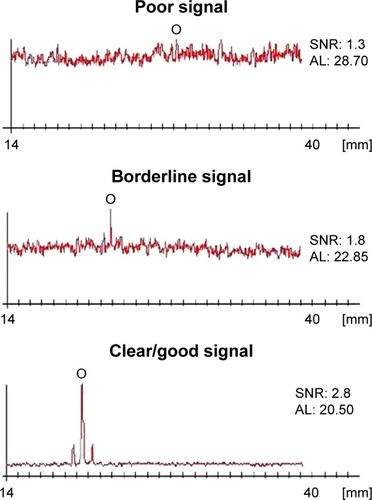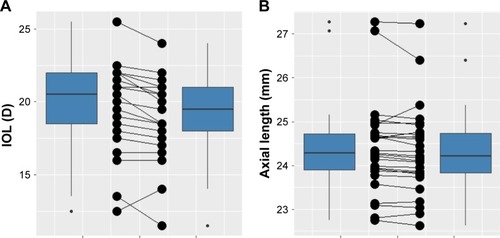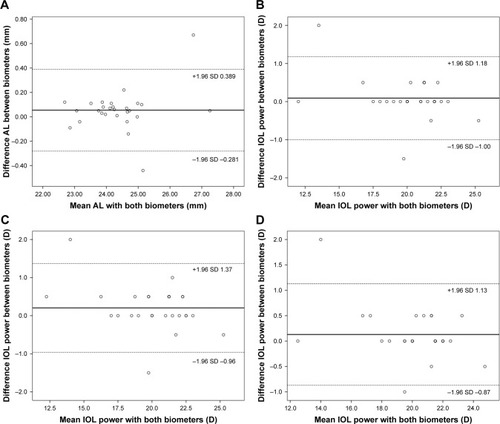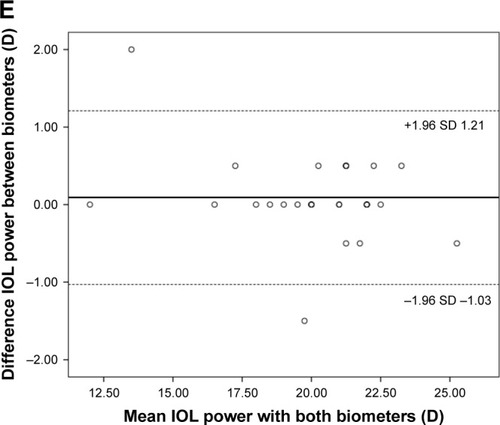Figures & data
Figure 1 Different levels of signal quality resulting from optical biometry. Abbreviations: AL, axial length; SNR, signal-to-noise ratio.

Table 1 Mean, standard deviation and difference in mean of AL and IOL power from IOL Master and US biometry
Table 2 Paired t-test comparing mean of AL obtained from IOL Master and US biometry
Figure 2 Box plots comparing corresponding data obtained from IOL Master and US biometry.
Abbreviations: IOL, intraocular lens; US, ultrasound.

Figure 3 Bland–Altman Plots demonstrating the agreement between IOL Master and US biometry.
Abbreviations: IOL, intraocular lens; US, ultrasound.


